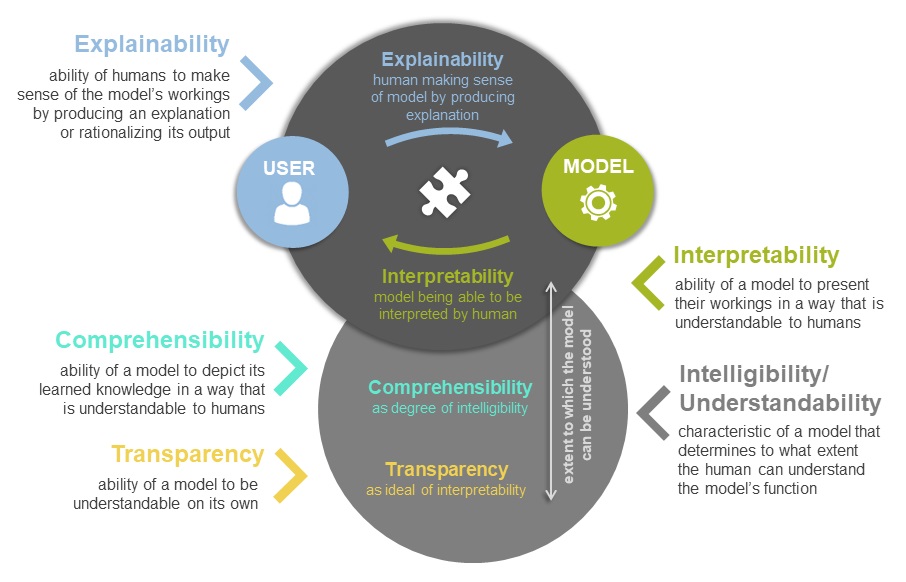When thinking of computer science – what images pop into one’s head and what can those images tell us about the discipline as well as interconnected societal expectations and norms? In this short post we report on our research into gendered codings of computer science.
In an effort to understand – and often with an aim to correct – gender inequality in STEM, gender studies focus in part on images and perceptions of disciplines like computer science (CS). The theory is that traditional notions of gender and structural inequalities manifest in gendered codings of the respective disciplines and influence areas like participation, work environment, content, perception, etc.
For our article on “Gender Studies between Reflection and Reproduction of Existing Images of Computer Science” (Bläsing/Draude 2020, in German) we looked at selected research on images of computer science and analyzed not only the findings but also the research itself.
What does gender studies research have to say about CS?
Analysing the selected previous research on CS from gender studies perspective, we noticed that such research exhibits a specific understanding of the discipline, of science itself, and of masculinity and femininity.
Images of Computer Science
Computer science is commonly perceived as a very formal and objective discipline/science – and often even advertises as such. It is seen as a male, White and Western field with a societal omnipotence and far-reaching societal impact. Knowledge of the discipline is presented as prevalently monolithic and limited to technical aspects, and especially programming.
Understanding of Science
The understanding of computer science and its images are part of constant processes of construction. There seems to be a discrepancy in the understanding of computer science which is shaped by its openness to or explicit wish for pluralism and interdisciplinarity, and the constitution of “other” forms of computer science and the distancing from them. For some, there is ‘pure’ computer science, which excludes subdisciplines like business informatics; for others, computer science itself is already an open and diverse field.
Images of Masculinity
Especially in Germany, computer science is historically interconnected with engineering, therefore it is in part (still) embedded in its culture and influenced by images of masculinity. For instance, in engineering, stereotypical understanding of technology as a male domain still prevails, thus also spilling over into images of computer science. Furthermore, CS is influenced by stereotypical images of mathematics (e.g., the connection of rationality and masculinity). A more technical (or mathematical) focus on CS could therefore reinforce the perception of CS as a male discipline and discourage women from participating.
On the other hand, constructions of masculinity in engineering are attested as not “uniform, but variable, flexible and highly contingent” (Paulitz/Prietl 2013, p. 300) and a (partial) shift of traditional constructions of masculinity in mathematics is acknowledged. Nonetheless, traditional perceptions, like of the “computer-fixated ‘nerd’ who acts in the machine and dominates it” (own translation, Schelhowe 2014, p. 72)[1], that are also heavily gendered, persist.
Computer science as a male, White and Western discipline
These findings show that gendered codings are inscribed into computer science. Often, knowledge about the discipline and vernacular knowledges of gender are intertwined, such as in the gendered attribution of characteristics and abilities (like rationality, logic, technical understanding and activity as masculine) that are seen as typical or sometimes even mandatory to the discipline. Interestingly, people often do not acknowledge or even are aware of their own assumptions/interpretations but view CS as a gender-neutral subject or attribute gendered codings not to the subject itself but to other factors. Engrained perceptions and images of the discipline are therefore often unconsciously shared and reproduced, maintaining or even amplifying normative images.
This results in gender-specific inclusion/exclusion pattern, especially regarding participation, disciplinary culture and advancement in CS, and the reinforcement of hegemonic-masculine perspectives. Examples of this include gendered paths into CS (e.g., a natural, logical step for men vs. a circuitous way which needs justification for women) as well as the normality and dominance of men in CS vs. women as an exception.
Women and femininity (or what is perceived as such) are excluded and devalued through different, sometimes interconnected mechanisms:
- Declaring specific characteristics, requirements, and activities as essential to CS, while simultaneously framing them as male, which results in CS getting coded as not (suitable) for women.
- Creating ‘feminine spaces’ in CS by separating ‘true’ CS from subdisciplines like socio- or media design informatics (“Sozioinformatik”, “Mediendesigninformatik” etc.) via biological deterministic gender attributions.
- Explaining women’s existence in CS by denying their femininity/womanhood and/or their professionalism, objectifying them.
Attempts to “explain” women (i.e. why they are or should be part of the discipline) in CS also show the intersection of other forms of discrimination. For instance, (anti-Muslimism) racism is invoked alongside sexism by claiming “cultural superiority” (own translation, Götsch 2014, p. 85)[2] of the Western world and devaluating CS of non-Western countries by declaring women in those countries as oppressed and not emancipated.
This constructs computer science as male, White and Western – a persistent image that is hard to erode, even though both logical contradictions in argumentation as well as lived realities constitute a different, more complex picture of CS.
Where to go from here?
The selected research shows that (everyday) knowledge and culture of computer science is rife with andro- and ethno-/Eurocentric views. However, as part of the disciplinary scientific discourse production, research itself is also embedded in the process of creating and replicating knowledge, images, and perceptions of and about the discipline. In that sense research is not exempt from influences of normative everyday knowledge. Therefore, it is always in danger of (re)producing such normative knowledge, especially unconsciously.
With regards to gender, binary, biological deterministic and dichotomous assumptions may inadvertently be reinforced through both small formal details and more structural research design decisions. These might include: a missing declaration of the researcher’s understanding of gender; the use of binary statistics (without at least acknowledging binarity as flawed); a one-dimensional research design addressing only men, women or certain groups of people by assumed gender; the (implicit) framing of men and women as opposite poles; and the focus exclusively on women and their low participation, which can lead to framing ‘women as a problem’. Furthermore, one-dimensional understandings of masculinity and femininity are often reinforced by stereotypes of computer scientists – always assigned male – e.g. as ‘nerds’, ‘hardware freaks’ or ‘Kellerkinder’ (literally translated as “basement kids”) and the differentiation of computer scientists from business computer scientists. This introduces different forms of (hegemonic) masculinities with specific mechanisms of (de-) valuation.
Diversity and interdisciplinarity in CS, particularly proliferation of sub-disciplines that engage social aspects of CS (such as socio informatics, for instance) are often presented as beneficial for engaging women and therefore increasing their participation in the discipline. However, this focus on the “social aspects” as the only solution to increasing the number of women can also inadvertently reinforce the idea of CS as a male discipline at its core, and promulgates stereotypical understanding of femininity.
What is noticeable in the articles analysed is that the reflection of racialized and geopolitically situated aspect of CS, i.e., CS as White and Western endeavor, is often missing. This is perhaps understandable, given that these articles focus on the gendered aspects of the discipline. However, failing to note or reflect on such racialized and culturally situated positioning of CS can further contribute to its reinforcement. This happens, for instance, through focussing exclusively or primarily on a Western version of the origin and history of CS, or a failed acknowledgement of the generalization of women in ‘Arabic countries’ as well as potential bias in the question itself.
Therefore, we suggest that research on participation in computer science can profit from an intersectional and inclusive approach which aims to make CS available for everyone. An intersectional perspective could, for example, highlight the interdependency of sexism, racism, and religion, and analyze participation in CS also with regards to other structural categories like dis/ability (Davis, 2017; Ellis et al., 2019; McRuer, 2006). It could also profit from integration of theories of postcolonial computing (Irani et al., 2010) and critical reflections on knowledge and science, such as (feminist) Science and Technology Studies (Harding, 1986, 1995, 2011; Suchman, 2019). Furthermore, research could benefit from diversifying research subjects, topics, methods, and methodologies. Participatory observation and New Materialism (Haraway, 1988, 1991, 1997; Barad, 2007; Coole & Frost, 2010; Fox & Alldred, 2015) for example could offer methodologies that are better suited to address the performative constitution of computer science and gender and expand existing research.
***
This blog post is an abbreviated summary of the aforementioned article by Bläsing/Draude (2020), which we recommend reading for a more comprehensive analysis, contextual placement and information on the referenced research.
Bläsing, L. M., & Draude, C. (2020). Geschlechterforschungen zwischen Reflexion und Reproduktion bestehender Bilder von Informatik. ZSE Zeitschrift für Soziologie der Erziehung und Sozialisation, 40 (3), 276-295. https://doi.org/10.3262/ZSE2003276
***
The header image for this post was generated with Firefly, with a prompt “create an imge for a blog post about computer science”.
References:
Barad, K. (2007). Meeting the Universe Halfway: Quantum Physics and the Entanglement of Matter and Meaning. Durham: Duke University Press.
Coole, D. & Frost, S. (eds.) (2010). New Materialisms: Ontology, Agency, and Politics. Durham: Duke University Press.
Davis, L. J. (ed.) (2017). The disability studies reader. New York: Routledge.
Ellis, K.; Garland-Thomson, R.; Kent, M. & Robertson, R. (eds.) (2019). Interdisciplinary Approaches to Disability. Looking Towards the Future: Volume 2. London: Routledge.
Fox, N. J. & Alldred, P. (2015). New materialist social inquiry: designs, methods and the research-assemblage. International Journal of Social Research Methodology, 18 (4), 399-414.
Götsch, M. (2014). Bilder von Informatik und Geschlecht. In A. Zeising, C. Draude, H. Schelhowe & S. Maaß (eds.), Vielfalt der Informatik. Ein Beitrag zu Selbstverständnis und Aussenwirkung (pp. 79–92). Bremen.
Haraway, D. (1988). Situated Knowledges: The Science Question in Feminism and the Privilege of Partial Perspective. Feminist Studies, 14 (3), 575–599.
Haraway, D. (1991). A Cyborg Manifesto: Science, Technology, and Socialist-Feminism in the Late Twentieth Century. In Simians, Cyborgs and Women: Reinvention of Nature (pp. 149-181). New York: Routledge.
Haraway, D. (1997). Modest_Witness@Second_Millennium. FemaleMan_Meets_Onco-Mouse™. Feminism and Technoscience. London: Routledge.
Harding, S. G. (1986). The science question in feminism. Cornell University Press.
Harding, S. G. (1995). The “Racial” Economy of Science: Toward a Democratic Future. In Isis, 86 (1), 89–91.
Harding, S. G. (Hrsg.) (2011). The postcolonial science and technology studies reader. Durham: Duke University Press.
Irani, L., Vertesi, J., Dourish, P., Philip, K. & Grinter, B. (2010). Postcolonial computing: A lens on design and development. In Proceedings of the SIGCHI Conference on Human Factors in Computing Systems (CHI ’10) (pp. 1211-1320). New York: Association for Computing Machinery.
McRuer, R. (2006). Crip theory. Cultural signs of queerness and disability. New York: New York University Press.
Paulitz, T. & Prietl, B. (2013). Spielarten von Männlichkeit in den „Weltbildern“ technikwissenschaftlicher Fachgebiete. Eine vergleichende empirische Studie an österreichischen Technischen Hochschulen. In B. Schinzel (ed.), Sonderheft: Weltbilder in der Informatik. Sichtweisen auf Profession, Studium, Genderaspekte und Verantwortung. Informatik-Spektrum, 36 (3), 300–308.
Schelhowe, H. (2014). Männlichkeitsbilder in der Geschichte der Informatik. In A. Zeising, C. Draude, H. Schelhowe & S. Maaß (eds.), Vielfalt der Informatik. Ein Beitrag zu Selbstverständnis und Aussenwirkung (pp. 63–76). Bremen.
Suchman, L. (2019). Feministische Science & Technology Studies (STS) und die Wissenschaften vom Künstlichen. In GENDER – Zeitschrift für Geschlecht, Kultur und Gesellschaft, 3, 56-83.
[1] „Bild vom computerfixierten, ‚Nerd‘, der in der Maschine agiert und sie beherrscht“
[2] „kulturelle Überlegenheit“



